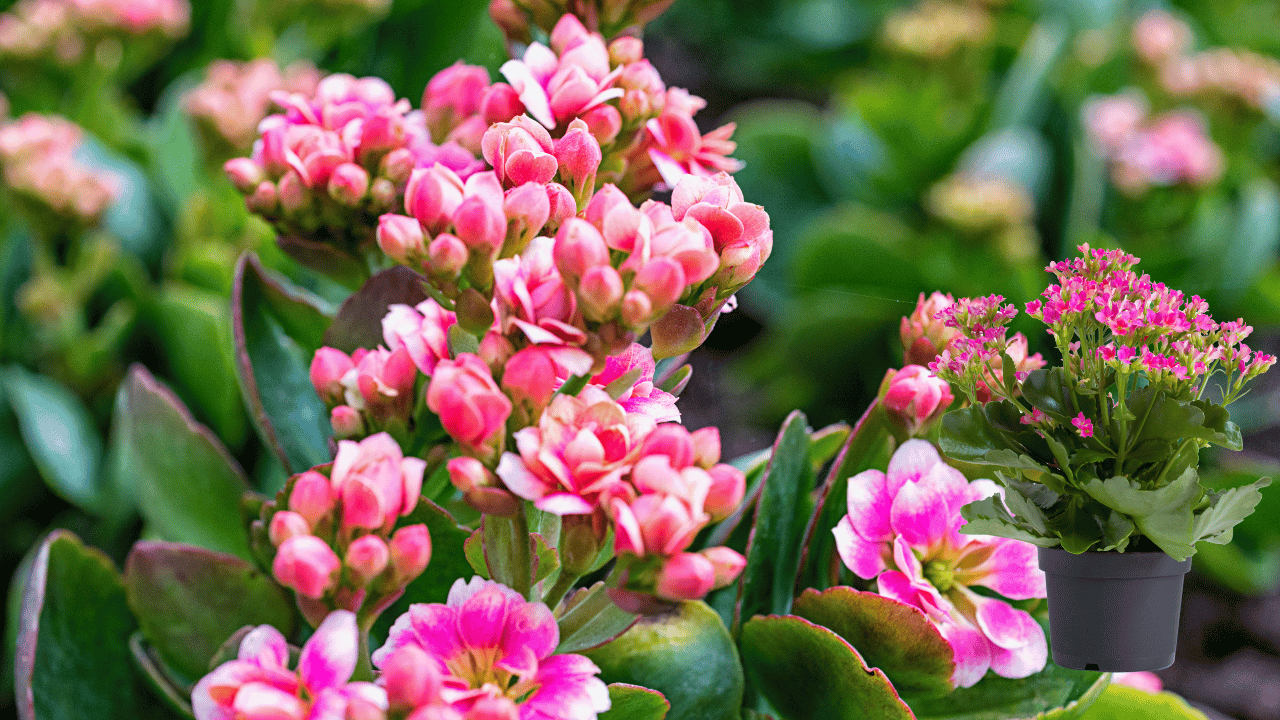Exploring the Beauty of Kalanchoe
Kalanchoe is a vibrant and low-maintenance succulent known for its stunning, long-lasting blooms and attractive fleshy foliage. With a wide variety of species and colors to choose from, the Kalanchoe plant is a popular choice among plant enthusiasts. In this guide, we’ll delve into the captivating world of Kalanchoe and learn how to care for these colorful succulents.
A Glimpse into Kalanchoe
Kalanchoe is a diverse genus of succulent plants that belong to the Crassulaceae family. Originating from Madagascar and other regions with arid climates, these succulents have adapted to store water in their leaves, making them remarkably drought-tolerant. The name “Kalanchoe” is believed to be of Chinese origin and means “that which falls and grows,” referring to the plantlets that drop from the mother plant to propagate themselves.
The Allure of Kalanchoe Blossoms
One of the most striking features of Kalanchoe is its vibrant, long-lasting flowers. These flowers come in a wide range of colors, including shades of red, pink, orange, yellow, and white. Some popular Kalanchoe species and their vibrant blooms include:
1. Kalanchoe blossfeldiana
This species is renowned for its dense clusters of bright, star-shaped flowers. It’s available in various shades, making it a favorite choice for indoor and outdoor gardens.
2. Kalanchoe thyrsiflora
Known as the “Flapjacks” plant, it boasts flat, round leaves and striking yellow flowers.
3. Kalanchoe tomentosa
Commonly called the “Panda Plant,” this Kalanchoe variety showcases soft, silvery leaves with brownish-red spots and edges.
4. Kalanchoe luciae
The “Flapjack Kalanchoe” features paddle-shaped, chalky leaves that take on a reddish hue along the edges.
Kalanchoe Care Guidelines
Caring for Kalanchoe is relatively simple, and these succulents make excellent houseplants or outdoor additions in warm climates. Here are some essential care guidelines:
1. Sunlight
Place your Kalanchoe in bright, indirect sunlight. While they tolerate some direct sun, intense heat can scorch their leaves.
2. Soil
Use well-draining succulent or cactus potting mix to prevent overwatering and root rot.
3. Watering
Allow the soil to dry out between waterings, and avoid standing water in the saucer to prevent root issues.
4. Temperature
Kalanchoe thrives in temperatures between 60°F and 85°F (15°C to 29°C) and should be protected from cold drafts and frost.
5. Pruning
Regular deadheading or removal of spent flowers will encourage new blooms.
Common Challenges
Kalanchoe is generally a resilient plant, but it can face issues like overwatering, root rot, or pests such as mealybugs. Keeping a watchful eye on your plant’s health and following proper care guidelines can help maintain its vibrant appearance.
In conclusion, the Kalanchoe plant is a testament to the beauty of succulents, offering a kaleidoscope of colors and a variety of species to choose from. With the right care and attention, these plants can thrive indoors and out, gracing your living space with a burst of vivid blooms and lush foliage. Whether you’re a seasoned gardener or a newbie to succulent care, the Kalanchoe is a fantastic addition to any collection.



